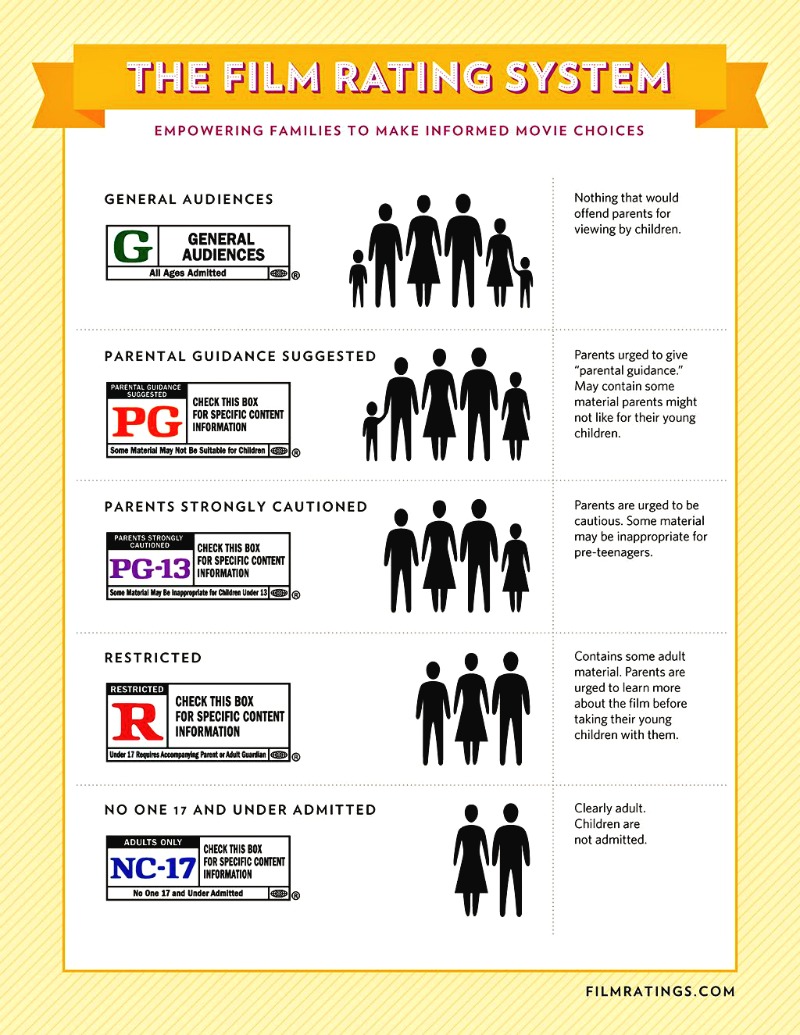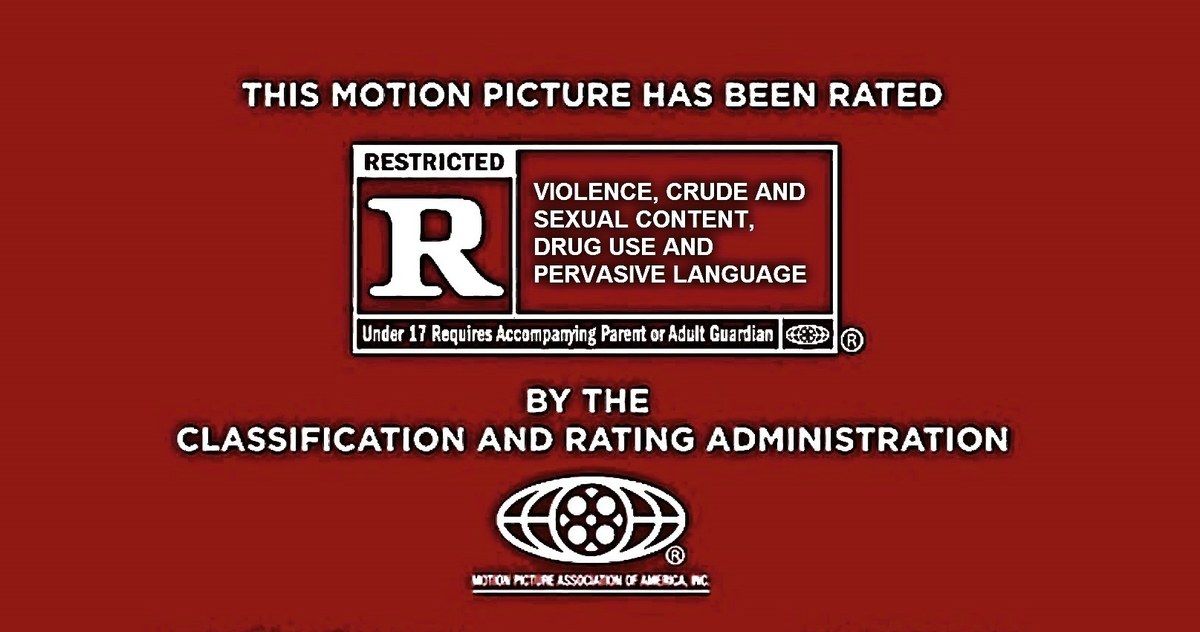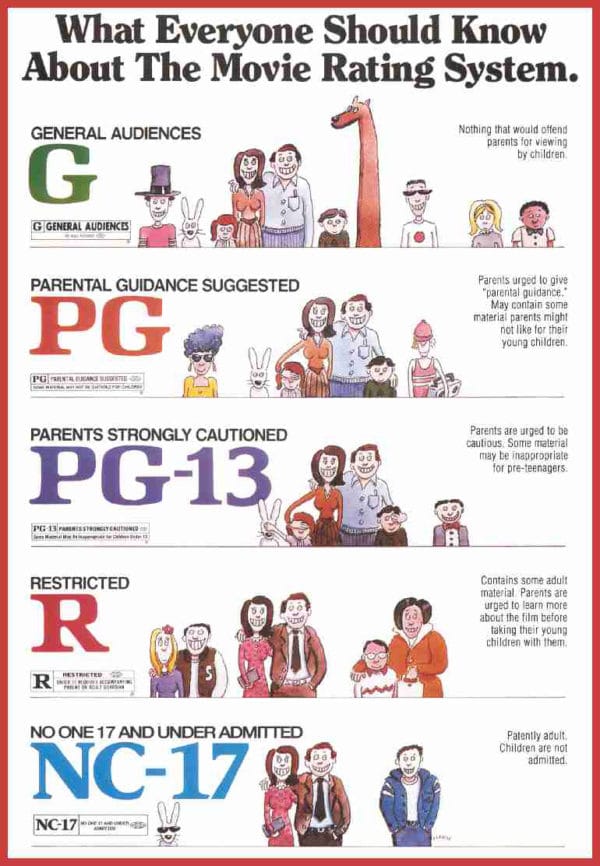R-Rated Movies: Age Restrictions, Meaning & What To Expect
Ever wondered why some films are off-limits to younger audiences? The "R" rating stands as a formidable gatekeeper, a cinematic boundary designed to protect the young and impressionable from content deemed too mature. This designation, and the complex system that underpins it, is a fascinating study in societal values, artistic expression, and the ongoing debate about what constitutes appropriate viewing material.
The world of film ratings is a nuanced landscape, a carefully constructed hierarchy intended to guide viewers toward content suitable for their age and sensibilities. At its heart lies the "R" rating, a classification that carries significant weight and often generates considerable discussion. This rating signifies that the film contains material considered unsuitable for those under a certain age, typically 17, without the accompaniment of a parent or adult guardian. The specific content that triggers an "R" rating can vary, but it generally encompasses strong language, graphic violence, explicit sexual content, and/or drug use.
| Aspect | Details |
|---|---|
| Rating | R (Restricted) |
| Meaning | No one under 17 admitted without parent or adult guardian. |
| Common Content | Strong language, graphic violence, explicit sexual content, drug use. |
| Purpose | To protect younger audiences from mature content. |
| First Introduced | 1968 (as part of the voluntary film rating system) |
| Equivalent in Canada (British Columbia) | May vary; provinces use similar category names but definitions differ. Refer to the Motion Picture Act Regulations, Section 3. |
| Examples of R-Rated Movies | Gangs of Wasseypur (2012), Delhi Belly (2011), Deadpool (2016) |
| Requirement | Proof of age is often required for admission. |
| Additional Notes | "Adult" themes with violent and sexual scenes are common. Trailers also have ratings. |
The Motion Picture Association (MPA), formerly the Motion Picture Association of America, is the organization primarily responsible for assigning film ratings in the United States. This organization utilizes a voluntary rating system, meaning that filmmakers are not legally obligated to submit their films for rating. However, the vast majority do so, as a rating provides valuable guidance to potential viewers and can significantly impact a film's commercial success. Without a rating, a film may face challenges in securing distribution and exhibition, as many theaters and streaming platforms rely on the MPA's ratings to inform their programming decisions.
The rating process itself is conducted by a board comprised of parents, individuals who are not affiliated with the film industry. These raters evaluate each film based on its content, taking into account factors such as the frequency and intensity of violence, the explicitness of sexual content, the use of offensive language, and the portrayal of drug use. The board then assigns a rating based on their assessment, with the goal of providing parents with the information they need to make informed viewing choices for their children. The ratings are not intended to censor or restrict artistic expression, but rather to offer guidance and transparency to audiences.
The "R" rating is just one component of a broader spectrum of film ratings, each designed to cater to different age groups and levels of maturity. The other commonly used ratings include "G" (General Audiences), "PG" (Parental Guidance Suggested), and "PG-13" (Parents Strongly Cautioned). A "G" rating indicates that the film contains nothing that most parents would find objectionable for even young children. "PG" suggests that some material may not be suitable for young children, and parental guidance is recommended. "PG-13" signals that some material may be inappropriate for children under 13, and parents are strongly cautioned to consider the film's content before allowing their children to view it.
The specific criteria used to assign ratings can be somewhat subjective, and the MPA's rating system has faced criticism over the years. Some argue that the system is overly lenient in its treatment of violence, while others contend that it is too restrictive when it comes to sexual content or language. These debates reflect the ongoing tension between artistic freedom and the desire to protect children from potentially harmful content. The MPA periodically reviews and updates its rating guidelines in response to societal changes and evolving parental concerns.
Outside the United States, film rating systems vary considerably from country to country. Many countries have their own national rating boards that assess films and assign ratings based on their own cultural values and societal norms. These systems often differ significantly from the MPA's, both in terms of the specific ratings used and the criteria employed to assign them. For example, some countries may have stricter regulations regarding violence or nudity, while others may be more tolerant of such content. This diversity in rating systems reflects the wide range of cultural perspectives on what constitutes appropriate viewing material for different age groups.
In Canada, the classification of motion pictures is largely a provincial responsibility. While many provinces utilize similar category names, such as "G," "PG," "14A," and "18A," the specific definitions for these categories, and the types of content they may contain, can vary from province to province. For example, British Columbia uses six categories to classify motion pictures, and these categories are defined in the province's Motion Picture Act Regulations. It's important to note that even within Canada, a film's rating may differ depending on the province in which it is being exhibited.
The "R" rating, regardless of the specific system in place, plays a crucial role in informing potential viewers about the content of a film and helping them make informed decisions about what to watch. It serves as a warning sign, indicating that the film contains material that may be unsuitable for younger or more sensitive viewers. By understanding the meaning and implications of the "R" rating, individuals can better navigate the complex world of cinema and choose films that align with their own values and preferences.
The impact of an "R" rating can extend beyond individual viewing choices. It can also influence a film's commercial prospects, as some theaters and streaming platforms may be hesitant to exhibit or stream films with an "R" rating due to concerns about alienating certain segments of their audience. Conversely, some filmmakers may deliberately seek an "R" rating in order to appeal to a specific target audience or to achieve a certain level of artistic authenticity. The decision to pursue an "R" rating is often a strategic one, involving a careful consideration of the potential benefits and drawbacks.
The evolution of film ratings reflects the changing social landscape and the ongoing debate about the appropriate role of censorship and artistic freedom. As societal values and norms evolve, so too do the criteria used to assign film ratings. The "R" rating, in particular, has been subject to scrutiny and revision over the years, as attitudes toward violence, sex, and language have shifted. The rating system is a dynamic and evolving entity, constantly adapting to the changing needs and concerns of the viewing public.
The interpretation of an "R" rating can also be influenced by personal experiences and cultural background. What one person considers to be offensive or inappropriate, another may find to be harmless or even entertaining. The perception of mature content is subjective and can vary widely depending on individual values and beliefs. Therefore, it's important to consider the "R" rating as just one piece of information when making a viewing decision, and to supplement it with other sources of information, such as film reviews and trailers.
The rise of streaming services has further complicated the landscape of film ratings. While many streaming platforms adhere to traditional rating systems, others have developed their own internal rating systems or rely on user-generated ratings. This can create confusion for viewers, as a film may have different ratings on different platforms. It also raises questions about the consistency and reliability of these alternative rating systems.
Despite the challenges and complexities surrounding film ratings, the "R" rating remains a valuable tool for informing viewers about the content of a film and helping them make informed viewing choices. It serves as a reminder that not all films are created equal, and that some content may be more suitable for mature audiences. By understanding the meaning and implications of the "R" rating, individuals can better navigate the world of cinema and choose films that align with their own values and preferences, ensuring a more enjoyable and enriching viewing experience.
The examples provided, such as Gangs of Wasseypur, Delhi Belly, and Deadpool, illustrate the diverse range of films that can receive an "R" rating. These films showcase a variety of mature themes and content, from graphic violence and explicit language to sexual situations and drug use. They serve as concrete examples of the types of films that parents and viewers should be aware of when making viewing decisions.
Trailers, which are often shown before films in theaters and online, also receive ratings. These ratings are intended to provide viewers with an indication of the content of the trailer and to ensure that trailers are not shown before films that are inappropriate for the trailer's target audience. The system for rating trailers is similar to the system for rating films, with different designations used to indicate the level of maturity of the content.
The enforcement of "R" ratings varies depending on the jurisdiction. In some areas, theaters are required to check identification and prevent individuals under the age of 17 from entering R-rated films without a parent or adult guardian. In other areas, the enforcement is less strict, and theaters may rely on the honor system or parental supervision. The effectiveness of enforcement efforts can vary depending on local laws and regulations.
The ongoing debate about film ratings reflects the broader societal conversation about the role of media in shaping values and attitudes. Some believe that film ratings are essential for protecting children from harmful content, while others argue that they are a form of censorship that infringes on artistic freedom. This debate is likely to continue as long as films continue to be a powerful and influential form of entertainment.
Ultimately, the decision of whether or not to view an R-rated film rests with the individual or their parent or guardian. The rating system is intended to provide information and guidance, but it is not a substitute for personal judgment and responsibility. By considering the rating, reading reviews, and understanding the content of a film, viewers can make informed decisions about what to watch and ensure a positive viewing experience.
The "R" rating, therefore, is not simply a label, but a complex symbol representing the intersection of art, commerce, and societal values. It is a guidepost in the vast landscape of cinema, helping viewers navigate the often-challenging terrain of mature content and make informed choices about the films they consume.
The history of the "R" rating is intertwined with the evolution of filmmaking and societal attitudes toward censorship and freedom of expression. Prior to the establishment of formal rating systems, films were often subject to local censorship boards that could ban or heavily edit films deemed to be morally objectionable. The rise of the MPA's voluntary rating system in 1968 was intended to provide a more consistent and transparent approach to film classification, while also avoiding the pitfalls of government censorship.
The "R" rating has been a subject of controversy and debate throughout its history. Some filmmakers have argued that the rating is unfairly applied and that it stifles artistic creativity. Others have argued that the rating is not strict enough and that it fails to adequately protect children from harmful content. These debates reflect the ongoing tension between the desire to protect vulnerable audiences and the need to preserve artistic freedom.
The impact of the "R" rating on the film industry is significant. Films with an "R" rating may face challenges in reaching a wider audience, as some theaters and streaming platforms may be hesitant to exhibit or stream them. However, an "R" rating can also be a badge of honor for some filmmakers, signaling that their film is edgy, daring, and not afraid to push boundaries. The decision to pursue an "R" rating is often a strategic one, involving a careful consideration of the potential costs and benefits.
The "R" rating is not a static entity, but rather a dynamic and evolving concept that reflects the changing social landscape. As societal values and norms evolve, so too do the criteria used to assign film ratings. The MPA periodically reviews and updates its rating guidelines in response to these changes, ensuring that the rating system remains relevant and responsive to the needs of the viewing public.
The future of the "R" rating is uncertain. As streaming services continue to gain popularity, and as new technologies emerge, the traditional model of film ratings may become less relevant. However, the need for some form of guidance to help viewers navigate the vast and ever-expanding world of cinema will likely remain. The "R" rating, or some similar designation, may continue to play a role in this process for years to come.
Ultimately, the "R" rating is a tool, a guide, a signpost. Its effectiveness depends on the user the individual viewer, the parent, the filmmaker, the distributor. It is a piece of information to be considered, weighed, and ultimately, used to make informed choices about the art we consume and the messages we allow to shape our world.
The context in which a film is viewed also plays a significant role in how the "R" rating is perceived. Viewing an R-rated film in a crowded theater can be a different experience than watching it at home with family. The social setting can influence the impact of the film's content and the viewer's overall reaction.
The "R" rating also raises questions about the responsibility of filmmakers. Do filmmakers have a moral obligation to avoid creating content that is potentially harmful to viewers, or should they be free to express themselves without regard for the potential consequences? This is a complex and multifaceted issue with no easy answers.
The use of trigger warnings has become increasingly common in recent years, particularly in academic and online settings. Trigger warnings are intended to alert viewers to potentially disturbing content, such as violence, sexual assault, or suicide. Some argue that trigger warnings are a necessary tool for protecting vulnerable individuals, while others argue that they are a form of censorship that can stifle discussion and debate.
The "R" rating and trigger warnings are both attempts to address the potential impact of media content on viewers. However, they differ in their approach. The "R" rating is a broad classification system that assigns a rating based on the overall content of a film, while trigger warnings are specific alerts that highlight potentially disturbing content within a particular work.
The debate about the "R" rating and trigger warnings reflects a broader societal conversation about the balance between freedom of expression and the need to protect vulnerable individuals. This conversation is likely to continue as long as media continues to be a powerful and influential force in our lives.
In conclusion, the "R" rating is a complex and multifaceted concept with a rich history and a uncertain future. It is a tool that can be used to inform viewers, guide parents, and shape the film industry. However, it is also a source of controversy and debate, reflecting the ongoing tension between freedom of expression and the need to protect vulnerable individuals. The "R" rating is a reminder that media is a powerful force that can have a profound impact on our lives, and that we must all be responsible consumers of media.
- Rrated Movies Age Restrictions Meaning What To Expect
- Db Cooper Mystery New Clues Emerge In Skyjacking Case

Rated R Movies And The Rating System That Created Them Third Hour

The Split The First R Rated Movie Ever Made

Movie Ratings Explained and Why is a Movie Rated PG 13? Movie Guys